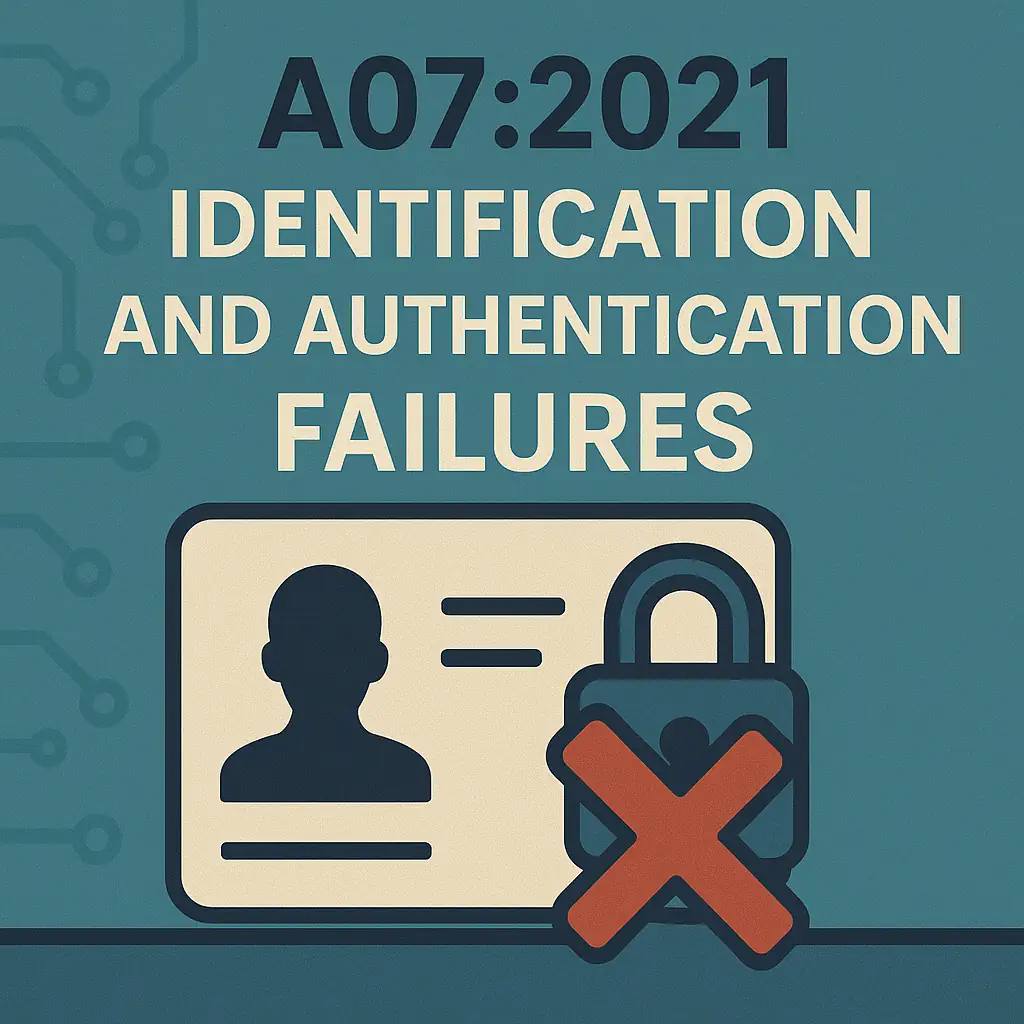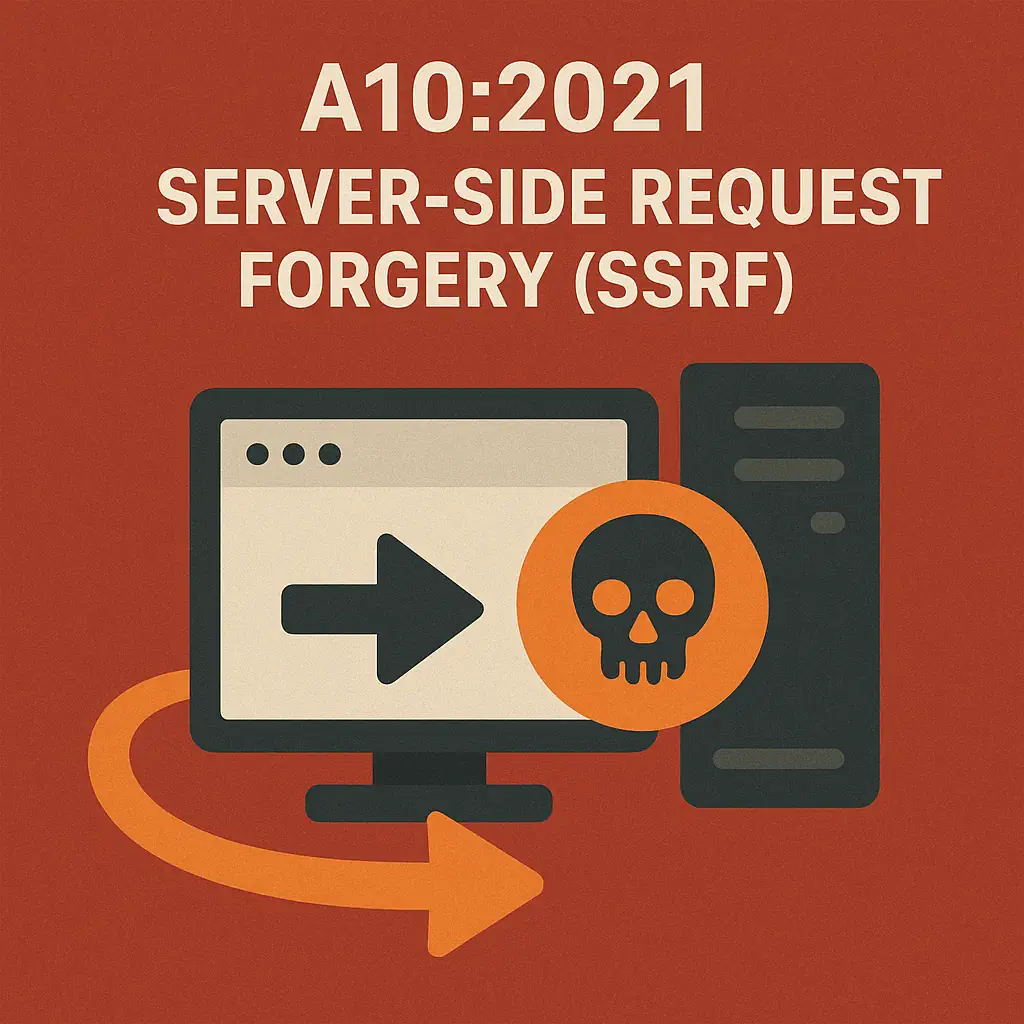Step into the realm of web application security with the OWASP Top 10 as your guide. This vital resource is indispensable for developers and security experts, offering an in-depth look at the most pressing security threats to web applications. In this article, we’ll explore why the OWASP Top 10 is crucial and how it can improve your organization’s software development practices and make it more secure. Let’s dive into the OWASP Top 10 and don’t give Hackers the low hanging fruits 🚀
What is OWASP Top 10?
The OWASP Top 10 is a cornerstone document for anyone involved in web application security. Created by the Open Web Application Security Project (OWASP), this list highlights the ten most critical security risks to web applications, as identified by security experts from around the globe. Updated regularly, the OWASP Top 10 reflects the current threat landscape and provides a comprehensive overview of the most prevalent and dangerous vulnerabilities.
Designed as an awareness guide, the OWASP Top 10 aims to educate developers, security professionals, and organizations about these key risks and offers best practices for mitigating them. These vulnerabilities are often the low-hanging fruits for attackers, meaning they are the easiest targets due to common weaknesses in web applications. By adopting the OWASP Top 10, companies can take significant steps toward enhancing their security posture and ensuring their applications are better protected against cyber threats. This document serves as a starting point for fostering a culture of security within software development teams, promoting the creation of safer and more resilient web applications.
Content of OWASP Top 10

A01:2021 - Broken Access Control
Explanation
Broken Access Control occurs when an application fails to properly enforce security measures, allowing unauthorized users to access or manipulate resources they should not be able to. This vulnerability is critical because it can lead to significant security breaches, including data theft, unauthorized actions, and exposure of sensitive information. Broken Access Control issues often arise when applications do not validate user permissions correctly, leaving gaps through which attackers can gain unintended access.
For example, an application might fail to properly check whether a user is authorized to view or modify certain data based on their role. Instead of enforcing access controls on sensitive actions, it might rely on client-side checks or expose functionality directly through URLs, allowing unauthorized users to bypass intended security measures. This can also occur if access control checks are inconsistent or missing altogether in different parts of an application.
Example
Consider a web application where users can access their profile information at /user/profile/123. If the application does not verify that the user requesting the profile data is indeed the owner, an attacker could exploit this by changing the URL to /user/profile/124 to view someone else’s profile.
# Flask example without proper access control
@app.route('/user/profile/<user_id>')
def user_profile(user_id):
user = users.get(user_id)
if user:
return jsonify(user)
return "User not found", 404
In this vulnerable example, there’s no check to ensure that the user requesting the data is authorized to access it.
Mitigation
# Flask example with proper access control
@app.route('/user/profile/<user_id>')
def user_profile(user_id):
logged_in_user_id = session.get('user_id')
if logged_in_user_id != user_id:
return "Forbidden", 403
user = users.get(user_id)
if user:
return jsonify(user)
return "User not found", 404
In this secure implementation, the application checks if the logged-in user’s ID matches the profile ID being requested. If they do not match, the application returns a “Forbidden” response, preventing unauthorized access.

A02:2021 - Cryptographic Failures
Explanation
Cryptographic Failures occur when applications use encryption or cryptographic techniques incorrectly or inadequately. Proper cryptographic practices are essential for securing sensitive data, including passwords, personal information, and financial data. Failures in this area can lead to the exposure of confidential data, data breaches, or unauthorized data manipulation.
Common issues include the use of outdated or weak cryptographic algorithms, improper implementation of encryption methods, and failure to use secure key management practices. For instance, if an application uses weak encryption algorithms like DES (Data Encryption Standard) or implements its own encryption routines without proper security vetting, it can be easily compromised. Similarly, failing to properly manage encryption keys, such as reusing keys or not storing them securely, can also lead to significant security vulnerabilities.
Example
Consider an application that stores user passwords. If the passwords are hashed using an outdated or weak hashing algorithm, such as MD5, it is vulnerable to attacks where an attacker can use precomputed tables (rainbow tables) to crack the hashes and reveal the actual passwords.
# Python example using weak MD5 hashing
import hashlib
def hash_password(password):
return hashlib.md5(password.encode()).hexdigest()
# Example usage
hashed_password = hash_password("user_password")
In this vulnerable example, the MD5 hashing algorithm is used, which is known to be insecure due to its susceptibility to collision attacks and precomputed hash attacks.
Mitigation
# Python example using strong bcrypt hashing
import bcrypt
def hash_password(password):
return bcrypt.hashpw(password.encode(), bcrypt.gensalt())
# Example usage
hashed_password = hash_password("user_password")
In this secure implementation, the bcrypt library is used, which is designed to be resistant to brute-force attacks and includes built-in mechanisms for salting and stretching the password hashes. This ensures that hashed passwords are significantly harder to crack, even if the hashed values are exposed.

A03:2021 - Injection
Explanation
Injection vulnerabilities occur when an application improperly handles user input, allowing attackers to inject malicious code or commands into an application’s query or execution context. This can lead to severe security issues such as unauthorized data access, data loss, or even full system compromise. Injection attacks are often seen in SQL injection, XSS, Command injection, and XML injection, among others.
For instance, SQL injection happens when an application allows user inputs to directly manipulate SQL queries without proper validation or escaping. This can enable attackers to execute arbitrary SQL commands, retrieve, modify, or delete database records, or even compromise the entire database server. Properly mitigating injection risks involves validating and sanitizing user inputs, using parameterized queries, and employing prepared statements to ensure that user data cannot alter the intended behavior of commands.
Example
Consider a web application where a user can search for items by entering a keyword. If the application directly includes the user input in a SQL query without proper sanitization, it can be vulnerable to SQL injection.
# Python example using SQLite with direct user input in SQL query
import sqlite3
def search_items(keyword):
conn = sqlite3.connect('database.db')
cursor = conn.cursor()
query = f"SELECT * FROM items WHERE name LIKE '{keyword}'"
cursor.execute(query)
results = cursor.fetchall()
conn.close()
return results
# Example usage
items = search_items("item_name' OR '1'='1")
In this vulnerable example, an attacker could input something like "item_name' OR '1'='1" to manipulate the SQL query, potentially bypassing authentication or retrieving all records from the database.
Mitigation
# Python example using SQLite with parameterized query
import sqlite3
def search_items(keyword):
conn = sqlite3.connect('database.db')
cursor = conn.cursor()
query = "SELECT * FROM items WHERE name LIKE ?"
cursor.execute(query, (f"%{keyword}%",))
results = cursor.fetchall()
conn.close()
return results
# Example usage
items = search_items("item_name")
In this secure implementation, the SQL query uses a parameterized query with placeholders (?) and safely incorporates user input through parameters. This approach prevents the execution of unintended SQL commands and protects against injection attacks by ensuring that user inputs are treated as data rather than executable code.

A04:2021 - Insecure Design
Explanation
Insecure Design refers to security flaws that arise from poor or inadequate design choices in an application. These vulnerabilities are often the result of failing to incorporate security considerations into the initial design and architecture of the software. Unlike implementation flaws, which occur during coding, insecure design issues are inherent in the way an application is conceptualized and planned.
Common problems associated with insecure design include lack of input validation, inadequate access controls, poor data handling practices, and failure to address known security patterns and best practices. Addressing insecure design requires a comprehensive approach that includes threat modeling, secure design principles, and early integration of security measures into the development lifecycle. This proactive approach helps ensure that security is embedded into the architecture and design of an application from the start.
Example
Consider a web application that allows users to submit feedback and reviews but does not incorporate adequate validation or sanitization of input data. If the design does not account for the potential of malicious input, attackers could exploit this vulnerability to execute attacks such as cross-site scripting (XSS) or SQL injection.
Imagine an application where users can post comments directly to a forum, but the design does not include any mechanisms to validate or sanitize the input data.
<!-- HTML form allowing users to submit comments -->
<form action="/submit_comment" method="POST">
<textarea name="comment"></textarea>
<button type="submit">Submit</button>
</form>
In this insecure design, the application allows arbitrary input without validating or escaping it, potentially leading to XSS attacks where an attacker could inject malicious scripts.
Mitigation
To address this, the design should incorporate input validation and sanitization mechanisms, ensuring that any data submitted by users is properly handled and filtered.
# Python Flask example with input sanitization
from flask import Flask, request, render_template_string
from html import escape
app = Flask(__name__)
@app.route('/submit_comment', methods=['POST'])
def submit_comment():
comment = request.form['comment']
sanitized_comment = escape(comment) # Escapes HTML to prevent XSS
# Save the sanitized_comment to the database or display it
return "Comment submitted successfully"
if __name__ == '__main__':
app.run()
In this secure design, the application uses the escape function to sanitize the input before processing it. This prevents XSS attacks by converting potentially dangerous characters into their HTML-encoded equivalents, ensuring that user input cannot be executed as code. Incorporating these practices into the design phase helps mitigate risks associated with insecure input handling.

A05:2021 - Security Misconfiguration
Explanation
Security Misconfiguration occurs when an application or its environment is not securely configured, leaving it vulnerable to attacks. This type of vulnerability is common and can arise from improper configuration settings, default configurations, incomplete setups, or failure to update and patch software. Security misconfigurations can expose sensitive data, allow unauthorized access, or enable attackers to exploit weaknesses in the system.
Common examples include leaving default credentials in place, exposing unnecessary services, failing to restrict file permissions, or not applying security patches. Addressing security misconfigurations requires a thorough review and hardening of the application’s configuration settings, as well as regular updates and monitoring to ensure that security best practices are maintained.
Example
Imagine a web server that is configured to allow directory listing, which can expose the contents of directories to users who access them. If sensitive files or configuration files are stored in these directories, they can be accessed by attackers.
Imagine a web server that is configured to allow directory listing, which can expose the contents of directories to users who access them. If sensitive files or configuration files are stored in these directories, they can be accessed by attackers.
In an Apache server configuration file (httpd.conf), directory listing might be enabled like this:
<Directory "/var/www/html">
Options Indexes FollowSymLinks
AllowOverride None
Require all granted
</Directory>
With Options Indexes enabled, any directory within /var/www/html can be listed, potentially exposing sensitive files.
Mitigation
To secure this, directory listing should be disabled:
<Directory "/var/www/html">
Options -Indexes FollowSymLinks
AllowOverride None
Require all granted
</Directory>
In this secure configuration, the Options -Indexes directive disables directory listing, ensuring that users cannot view the contents of directories. This helps protect sensitive files from being exposed through the web server. Additionally, other security practices like updating software, removing unused services, and securing file permissions should be part of a comprehensive approach to prevent security misconfigurations.

A06:2021 - Vulnerable and Outdated Components
Explanation
Vulnerable and Outdated Components refer to the use of software libraries, frameworks, and other components in an application that have known security vulnerabilities or are no longer supported. These components can introduce significant risks if they are not kept up-to-date with the latest security patches and updates. When applications rely on outdated or vulnerable components, they inherit the security weaknesses of those components, potentially exposing them to exploits and attacks.
Common issues include using outdated versions of libraries with known vulnerabilities, failing to upgrade deprecated frameworks, or using components that are no longer maintained. Proper management of software dependencies involves regularly updating components, applying security patches, and replacing deprecated or unsupported libraries with secure alternatives.
Example
Consider a web application that uses an outdated version of a popular JavaScript library, such as jQuery. If the version in use has known security vulnerabilities, attackers could exploit these weaknesses to compromise the application.
Suppose the application includes the following jQuery library version, which is outdated and contains known vulnerabilities:
<!-- Including an outdated version of jQuery -->
<script src="https://code.jquery.com/jquery-1.12.4.min.js"></script>
Version 1.12.4 of jQuery is known to have several vulnerabilities that could be exploited by attackers.
Mitigation
To address this, you should update to a more recent and supported version of the library:
<!-- Including an updated and secure version of jQuery -->
<script src="https://code.jquery.com/jquery-3.6.0.min.js"></script>
Version 3.6.0 includes the latest security patches and improvements, reducing the risk of vulnerabilities. Additionally, regularly monitoring for new releases, subscribing to security advisories, and employing tools to manage and update dependencies are important practices for maintaining the security of components used in your application.

A07:2021 - Identification and Authentication Failures
Explanation
Identification and Authentication Failures occur when an application does not properly verify the identity of users or fail to securely handle user credentials. These failures can lead to unauthorized access, where attackers can impersonate users or gain control over accounts without valid credentials. Common issues include weak password policies, improper session management, insecure password storage, and flawed authentication mechanisms.
Proper identification and authentication are crucial for ensuring that only authorized users can access sensitive resources and perform privileged actions. This involves implementing strong password policies, using secure password hashing algorithms, ensuring robust session management, and employing multi-factor authentication (MFA) to enhance security.
Example
Consider a web application that uses a simple authentication mechanism with weak password policies and improper session management. For example, if the application stores passwords in plain text and uses predictable session identifiers, it becomes vulnerable to various attacks.
# Python example of insecure password storage and session management
import hashlib
import random
import string
def hash_password(password):
return hashlib.md5(password.encode()).hexdigest() # Weak hashing algorithm
def generate_session_id():
return ''.join(random.choices(string.ascii_letters + string.digits, k=8)) # Predictable session IDs
# Example usage
stored_password_hash = hash_password("user_password")
session_id = generate_session_id()
In this vulnerable example, MD5 is used for hashing passwords, which is insecure due to its susceptibility to collision and precomputed hash attacks. Additionally, session IDs are generated using predictable patterns, making them vulnerable to session fixation or brute-force attacks.
Mitigation
# Python example of secure password storage and session management
import bcrypt
import secrets
def hash_password(password):
return bcrypt.hashpw(password.encode(), bcrypt.gensalt()) # Strong hashing algorithm
def generate_session_id():
return secrets.token_urlsafe(16) # Cryptographically secure session IDs
# Example usage
stored_password_hash = hash_password("user_password")
session_id = generate_session_id()
In this secure implementation, bcrypt is used for hashing passwords, providing robust protection against brute-force and rainbow table attacks. The secrets library is used to generate cryptographically secure session IDs, improving the security of session management. These practices help ensure that authentication mechanisms are robust and resilient against common attacks.

A08:2021 - Software and Data Integrity Failures
Explanation
Software and Data Integrity Failures occur when applications or systems fail to protect the integrity of their software and data from unauthorized modifications. These failures can result in altered or corrupted software and data, which can compromise the functionality, security, and reliability of an application. The integrity of software and data is critical for maintaining trust and ensuring that systems operate as intended without interference from malicious actors.
Common issues include improper validation of software updates, inadequate protection of critical data, and insufficient verification mechanisms for data integrity. For instance, if an application allows updates without verifying their authenticity or integrity, attackers could inject malicious code into software updates or tamper with application data. Ensuring software and data integrity involves implementing robust validation, encryption, and verification mechanisms to protect against unauthorized changes.
Example
Consider a web application that downloads updates from a server. If the application does not verify the integrity of the downloaded update, an attacker could substitute a malicious update, compromising the application.
# Python example of insecure update process
import requests
def download_update(url):
response = requests.get(url)
with open('update.zip', 'wb') as f:
f.write(response.content)
# No integrity check is performed
# Example usage
download_update('http://example.com/latest_update.zip')
In this vulnerable example, the application downloads an update file without verifying its authenticity or integrity, making it susceptible to attacks where an attacker could replace the update with a malicious version.
Mitigation
# Python example of secure update process with integrity check
import requests
import hashlib
def verify_file_integrity(file_path, expected_hash):
sha256_hash = hashlib.sha256()
with open(file_path, 'rb') as f:
for chunk in iter(lambda: f.read(4096), b""):
sha256_hash.update(chunk)
return sha256_hash.hexdigest() == expected_hash
def download_update(url, expected_hash):
response = requests.get(url)
with open('update.zip', 'wb') as f:
f.write(response.content)
if not verify_file_integrity('update.zip', expected_hash):
raise ValueError("File integrity check failed")
# Example usage
expected_hash = 'abcdef1234567890...' # Precomputed SHA-256 hash of the expected update file
download_update('http://example.com/latest_update.zip', expected_hash)
In this secure implementation, after downloading the update file, the application verifies its integrity by comparing its hash against a precomputed SHA-256 hash. This ensures that the file has not been tampered with during download, protecting against potential malicious updates. By incorporating such verification mechanisms, applications can safeguard the integrity of both software updates and data.

A09:2021 - Security Logging and Monitoring Failures
Explanation
Security Logging and Monitoring Failures occur when an application or system lacks adequate mechanisms for logging security-relevant events and monitoring for suspicious activities. Effective logging and monitoring are essential for detecting and responding to security incidents, understanding the nature of attacks, and providing valuable forensic information. Without proper logging and monitoring, organizations may fail to detect breaches, identify compromised systems, or understand how an attack unfolded.
Common issues include insufficient logging of critical events, such as authentication attempts, failed logins, or changes to sensitive data, as well as the lack of monitoring tools or alerts for suspicious behavior. Additionally, if logs are not properly protected, attackers could tamper with or delete them to cover their tracks. Addressing these failures involves implementing comprehensive logging practices, ensuring logs are protected and regularly reviewed, and setting up effective monitoring and alerting systems.
Example
Consider a web application that does not log failed login attempts. If an attacker is trying to guess user passwords through brute-force attacks, there would be no record of these attempts, making it harder to detect and respond to the attack.
# Python example without logging failed login attempts
def authenticate_user(username, password):
user = get_user_from_database(username)
if user and user.verify_password(password):
return "Authentication successful"
return "Authentication failed"
# Example usage
result = authenticate_user("admin", "password123")
In this example, failed login attempts are not logged, leaving no record of potentially malicious activity.
Mitigation
# Python example with logging of failed login attempts
import logging
# Configure logging
logging.basicConfig(filename='auth.log', level=logging.INFO)
def authenticate_user(username, password):
user = get_user_from_database(username)
if user and user.verify_password(password):
logging.info(f"User {username} authenticated successfully")
return "Authentication successful"
logging.warning(f"Failed login attempt for user {username}")
return "Authentication failed"
# Example usage
result = authenticate_user("admin", "password123")
In this secure implementation, failed login attempts are logged with a warning level in an auth.log file. This enables monitoring of authentication activity, helping to detect and respond to potential security incidents. By including detailed and actionable logging and establishing monitoring practices, organizations can better safeguard their systems and respond effectively to security threats.

A10:2021 - Server-Side Request Forgery (SSRF)
Explanation
Server-Side Request Forgery (SSRF) is a vulnerability that occurs when an attacker is able to make requests from the server-side of an application to internal or external resources that the application is not intended to access. This can lead to unauthorized access to internal systems, exposure of sensitive data, or interaction with resources that should be restricted. SSRF vulnerabilities often arise from improper handling of user-controlled input when making requests on behalf of the server.
Common scenarios where SSRF can be exploited include when an application allows users to specify URLs or endpoints for fetching data, but fails to validate or restrict these requests. Attackers can use SSRF to access internal services, such as databases, metadata services, or local endpoints that are not exposed externally, which can lead to data leakage or further attacks within the internal network.
Example
Consider a web application that allows users to fetch images from a URL they provide. If the application does not properly validate or restrict these URLs, an attacker might be able to exploit this to make internal requests.
# Python example of a vulnerable SSRF implementation
import requests
def fetch_image(url):
response = requests.get(url)
if response.status_code == 200:
with open('image.jpg', 'wb') as f:
f.write(response.content)
else:
print("Failed to fetch image")
# Example usage
fetch_image("http://internal-service.local/secret-data")
In this example, the application fetches an image from a URL provided by the user without validating or restricting the URL. An attacker could specify an internal URL that the application’s server can access, potentially leaking sensitive data from internal services.
Mitigation
# Python example of a secure SSRF implementation with URL validation
import requests
from urllib.parse import urlparse
ALLOWED_DOMAINS = ['example.com']
def is_allowed_url(url):
parsed_url = urlparse(url)
return parsed_url.hostname in ALLOWED_DOMAINS
def fetch_image(url):
if not is_allowed_url(url):
raise ValueError("URL is not allowed")
response = requests.get(url)
if response.status_code == 200:
with open('image.jpg', 'wb') as f:
f.write(response.content)
else:
print("Failed to fetch image")
# Example usage
fetch_image("https://example.com/some-image.jpg")
In this secure implementation, the is_allowed_url function checks if the provided URL’s domain is within an allowed list before making the request. This prevents the server from making requests to internal or unauthorized endpoints, thereby mitigating the risk of SSRF attacks. By implementing strict validation and access controls for user-controlled URLs, you can reduce the likelihood of SSRF vulnerabilities and protect internal resources from unauthorized access.
Tools to Support OWASP Top 10 Compliance in Modern Development Environments
Understanding the OWASP Top 10 is essential—but true security comes from putting that knowledge into practice. Fortunately, a wide range of tools and plugins can be integrated into development environments like Visual Studio Code, Jenkins, IntelliJ, and GitHub Actions to identify and mitigate security vulnerabilities early in the development lifecycle.
🔧 OWASP Security Extensions for Visual Studio Code
In VS Code, several powerful extensions help developers detect OWASP Top 10 vulnerabilities directly during coding:
- ESLint + eslint-plugin-security
Scans JavaScript/TypeScript for common vulnerabilities like unsafeeval()usage or improper input validation. - CodeQL (by GitHub)
A powerful static analysis engine that can detect complex vulnerabilities such as SQL injection, command injection, or insecure deserialization. - SonarLint
Offers real-time feedback and highlights security issues aligned with OWASP and secure coding guidelines. - Bandit (for Python)
Analyzes Python code for security flaws such asexec()usage, weak cryptography, and unvalidated user inputs.
🔄 Integrating OWASP Checks into CI/CD with Jenkins & Others
In Jenkins, GitHub Actions, or GitLab CI/CD, you can integrate automated security scans into your pipelines to detect issues before code reaches production:
- OWASP Dependency-Check (Jenkins Plugin)
Scans third-party libraries (npm, Maven, pip, etc.) for known vulnerabilities using the National Vulnerability Database (NVD). - OWASP ZAP Integration
Automate dynamic application security testing (DAST) using OWASP ZAP, one of the most trusted tools to detect XSS, CSRF, open redirects, and more. - SonarQube Security Rules
When connected to Jenkins or GitHub workflows, SonarQube can enforce security rules related to input handling, authentication, and authorization—helping prevent OWASP-related flaws.
🧩 Security Tools for IntelliJ, Eclipse, and Other IDEs
Other popular IDEs also support robust OWASP-focused security tools:
- Checkmarx Plugins (IntelliJ, Eclipse)
Industry-grade static application security testing (SAST) with real-time feedback and remediation guidance. - Fortify Static Code Analyzer
An enterprise solution to scan for vulnerabilities mapped to OWASP Top 10 and compliance frameworks such as ISO/IEC 27001 and NIST. - Semgrep
Lightweight, fast static analysis that supports custom OWASP rule sets. Works in local development and CI pipelines.
Summary
Understanding the OWASP Top 10 is a crucial foundation for developing secure systems. By being aware of these top vulnerabilities, anyone who reads this article can take steps to reduce the risk of a successful attack. However, the OWASP Top 10 represents just a fraction of potential vulnerabilities; it does not guarantee complete protection from attacks. Absolute security is unattainable, but minimizing risk is essential. Tools like penetration testing are valuable for identifying weaknesses and vulnerabilities in systems, and participating in bug bounty programs can also be a useful supplement. Each organization must decide how to proactively secure its systems. Ignoring security risks and doing nothing is not an option. A successful attack is a matter of time.






